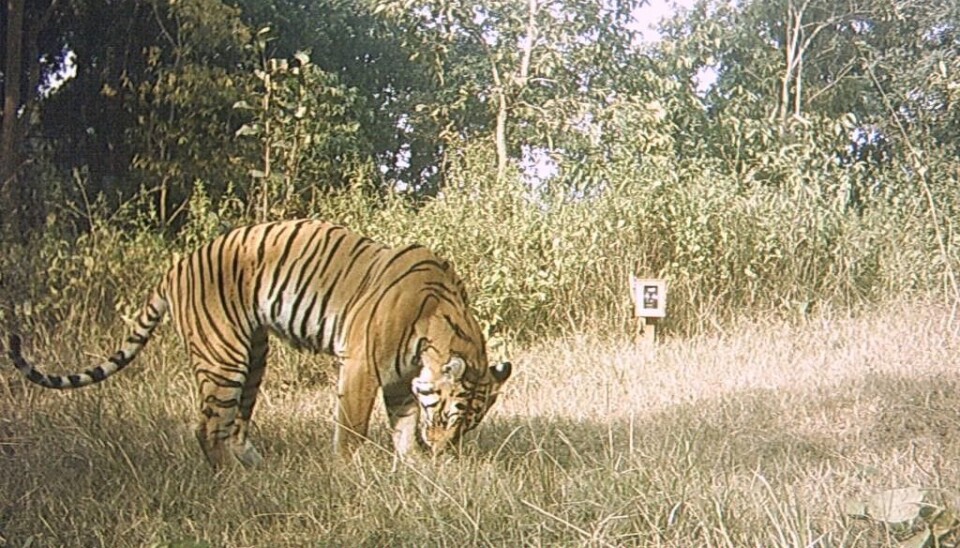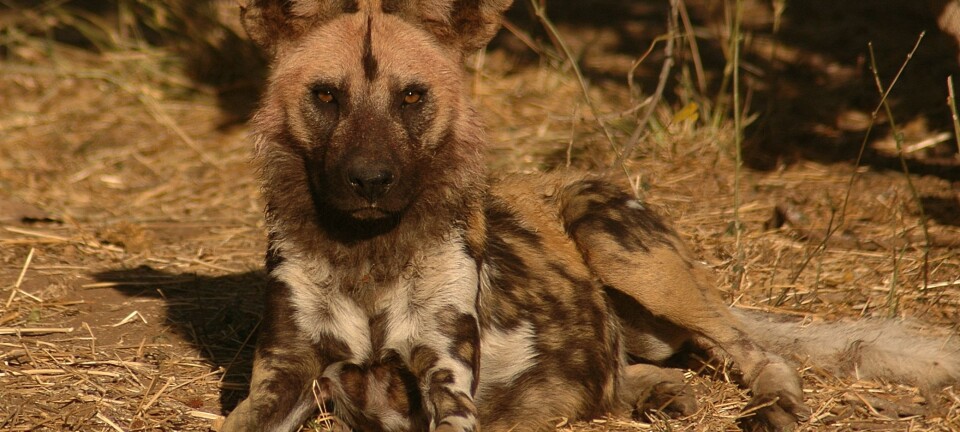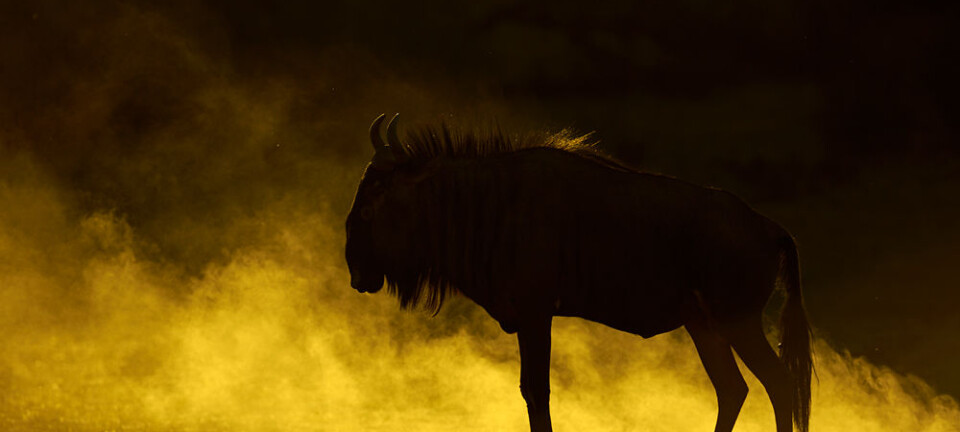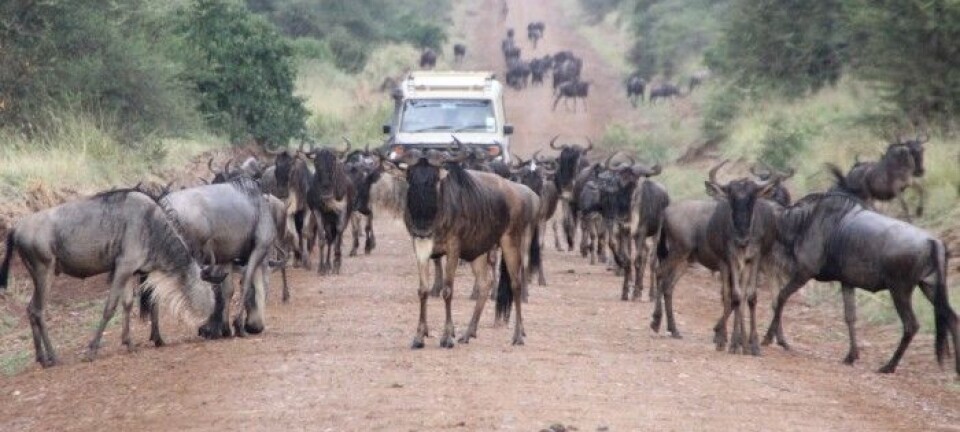This article was produced and financed by NINA - Norwegian Institute for Nature Research

Data sharing improves decision making
Indo-Norwegian pilot project demonstrates how open access to biodiversity data can contribute to improved decision making.
Denne artikkelen er over ti år gammel og kan inneholde utdatert informasjon.
Infrastructure shortcomings and capacity limitations often represent barriers for making publicly funded data openly accessible. To break down these barriers, Norwegian and Indian researchers, in collaboration with the Global Biodiversity Information Facility (GBIF), have developed tools to facilitate data sharing through GBIF.
“Through several case studies we have demonstrated how biodiversity informatics, camera trapping, data mobilization and access policies can contribute to improved research activities and decision making,” says Frank Hanssen, GIS Coordinator at the Norwegian institute for nature research (NINA).
Hanssen is the project manager of this Indo-Norwegian project, aiming to build capacity and share knowledge and experiences within the field of Biodiversity Informatics in India.
India is one of Norway’s main research partners, and the project is a part of the Norwegian contribution to the Intergovernmental Platform for Biodiversity and Ecosystem Services (IPBES). The project is focusing on national user needs of India and aligns very well with the Indian National Biodiversity Strategy and Action Plan (NBSAP). The project has clearly proved relevance in addressing the capacity building needs identified by the IPBES.
GBIF is an international network of countries and organizations working towards increased global flow of biodiversity data. GBIF’s infrastructure promotes mobilization of existing knowledge, as well as contributing with new knowledge on biodiversity. Their ambition is becoming a global supplier of research data supporting IPBES’ work. Building on GBIF’s international standards, this particular project has large synergies towards other projects.

“This type of activity has a high priority in NINA. This project is a good example on how Norwegian and Indian knowledge based environments can contribute to IPBES together,” says Norunn S. Myklebust, managing director at NINA.
Camera trapping in ecological research
Indian scientists have over many years evolved advanced techniques and great experience in camera trapping from India and neighboring countries both in protected nature reserves and in rural settlements.
The result is large volumes of high-quality, camera trap data of threatened species, scattered in archives, computers and servers across the country. Thus, there is a need for a national infrastructure for storing and managing such data.
The Wildlife Institute of India (WII) has during the project developed a national database and a web-portal for mobilizing camera trap data. The Norwegian partners and GBIF have contributed with their experience and expertise in Infrastructure development and facilitated data sharing. These developments are important steps towards a national, open biodiversity data management system for camera trap images, and their axillary metadata.
“This project serves as a good example of how the concept of having a better research-policy interface can be translated into an on-ground action to promote conservation of an endangered wild carnivore species–the tiger. The project has highlighted the need for making investments in the science of biodiversity informatics as these investments help in securing both species and habitat conservation,“ says Dr. Vinod B. Mathur, Director of the Wildlife Institute of India.
Best practice guide
The project has also a developed a Best Practice Guide (BPG) for publishing of biodiversity data derived from camera trapping.
The BPG aims to support managers and team members working in biodiversity projects with a camera trapping component. It gives recommendations on how to plan and execute the data capture and publishing components of those projects, making sure that they are compatible with existing international standards, such as those developed by GBIF. The BPG will be maintained by GBIF in the future.
Mobilizing legacy data
Natural History museums across Europe and the United States possess large amounts of biodiversity collections originating from other continents. IPBES emphasizes the importance of making such data available for countries of origin.
The project has therefore conducted a minor data repatriation exercise of Indian legacy collections held in the Norwegian natural history museums. The repatriated biodiversity data are now freely available through GBIF.
“The amount of data from the Norwegian legacy collections is sparse, but the experiences from this repatriation exercise may have great synergies for similar exercises in other legacy collections,” says Hanssen.
Citizen science increases public awareness
The project highly emphasizes the importance of citizen science in capacity building. In India, Citizen scientists have been collaborating with professional scientists in several case studies throughout the entire project period. Mobilization of georeferenced biodiversity data from citizen science projects is a very important task for future scientific achievements, and has potential use in policy and management.
The project has therefore developed a web-application for uploading images of wildlife that has been photographed outside protected area in India.
“Often it is thought that wild carnivores only can live within protected areas. This web page provides evidence that human use areas also support wild carnivores and has potential implications for policy regarding wildlife in shared landscapes in India,” says Dr. Vidya Athreya, Centre for Wildlife Studies, Bangalore, India.
Capacity building for Intergovernmental Platform for Biodiversity and Ecosystem Services (IPBES)
Hanssen points out the good collaboration between the partners as a crucial factor for the project’s success. Finalizing the project, the project partners have decided to look for new possibilities for collaboration under the IPBES.
-------------------
Scientific literature:
Hanssen, F. (editor), Mathur, V.B. (editor) et al. Capacity building for Intergovernmental Platform for Biodiversity and Ecosystem Services (IPBES). Final report 2014: Indo-Norwegian pilot project on capacity building in biodiversity informatics for enhanced decision making, improved nature conservation and sustainable development. - NINA Report 1079. 116 pp.
Cadman, M. & González-Talaván, A. (eds.) (2014). Publishing Camera Trap Data, a Best Practice Guide. Contributed by Hanssen, F., Mathur, V.B., Athreya, V., Talukdar, G., Pandav, B., Ghosh, Champion, J., M., Harihar, A., Vang, R., Lindgaard, A, Mehlum, F. & Chavan, V. Copenhagen: Global Biodiversity Information Facility.
Barve, V. (2014). Discovering and Developing Primary Biodiversity Data from Social Networking Sites: A Novel Approach. Ecological Informatics, 24, 194–199. doi:10.1016/j.ecoinf.2014.08.008

































